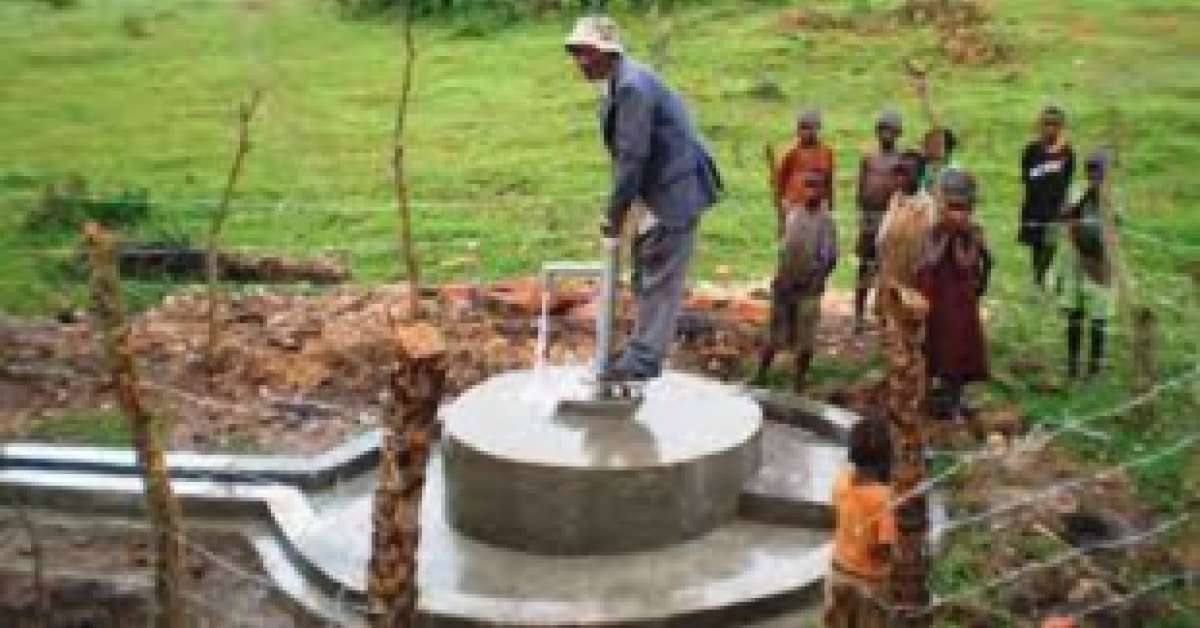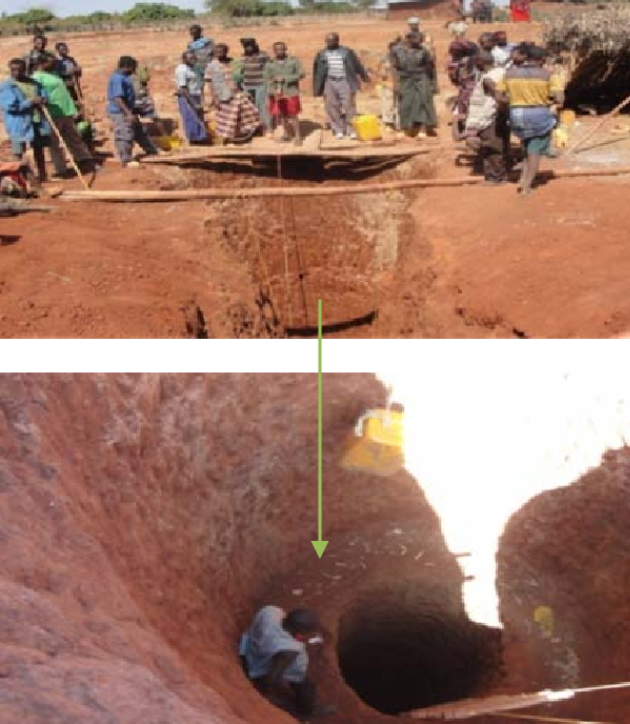22 November 2022
Rainwater Harvesting Around the World – Ethiopia
Paradoxically, Ethiopia is very well known for its enormous water resource potential (especially in the Ethiopian Highlands) and still known as the water tower of Africa, it is the source of 12 big River Basins including the Blue Nile and many transboundary rivers.

According to Habtamu (1999), rainwater harvesting systems have a longstanding history in Ethiopia, with strong ties to the old Orthodox churches, and date back to the preAxumit period of 560 BC. A roof water harvesting set-up is still visible in the remains of the palace of the legendary Queen of Sheba, one of the oldest palaces in Axum. In the south of the country, the Konso people have had a well-established tradition of building level terraces for rainwater harvesting to successfully produce sorghum under extremely harsh environments. The importance of these techniques has not been recognized until comparatively recently - it was only after the devastating drought and famine of the 1980s. Today, by strengthening these indigenous practices and sharing best practices on a larger scale, Ethiopia is making some progress on rainwater harvesting systems enabling smallholder farmers to diversify their crops, thereby enhancing household economic return, food security, and dietary status.
East Africa has been suffering from severe droughts in the past few years. In most East African countries, there are intense rainstorms followed by long dry periods. While wetter countries such as Rwanda and Burundi receive a long-term average rainfall of around 1,200mm/year, Djibouti receives only 220mm/year, and in Ethiopia, the seasonal and annual rainfall is very unpredictable and varied. Even though Ethiopia has abundant surface and groundwater resources as well as potentially irrigable land, only 4–5% of the available land has been developed. More than 60 million Ethiopians are affected by water scarcity and the water that they have access to is not always safe. Water stress is the main factor that limits the supply of residential water, livestock watering, and agricultural productivity (Wale et al. 2021). Utilizing water resources can provide full-season and supplemental irrigation to compensate for agricultural productivity losses. Also, the availability of water is crucial to ecosystem services and socioeconomic development.
To improve food security and to overcome the challenges caused by climate change, the Ethiopian government, together with local communities, have made large efforts by constructing rainwater harvesting techniques at the household and community level which have had positive effects on food security in Ethiopia. Furthermore, these efforts contribute to reduced distance and time to water points, crop diversity, crop productivity, livestock productivity, and livestock feed. The rainwater harvesting techniques commonly practiced in Ethiopia today are roof water harvesting, runoff irrigation (run-off farming), in-situ water harvesting (ridges, micro basins, conservation tillage, etc.), and flood spreading (spate irrigation).
A few decades ago, the government initiated a project to support the construction of household rainwater harvesting ponds, which was intended to generate employment opportunities for the people affected by the 1971–1974 drought. Some of these ponds are still in use but most of them have been filled with silt due to soil erosion in the catchment area. Luckily, several organisations like international and indigenous NGOs have a mission to supply water to people who face water scarcity in Ethiopia. A Geographical Information System with a multi-criteria evaluation system has been used to identify suitable rainwater harvesting sites based on soil texture, land use and cover, runoff depth, drainage density, slope, and considering town and road constraints.
Roof water harvesting in Ethiopia has the advantage of being low-cost, relatively simple in design (household technology), less laborious and time-saving (Alem, 1999). It provides adequate water during the rainy season when the rural people are busy with farm activities. Improved in-field water harvesting can increase the time required for crop moisture stress to set in and thus can result in improved crop yields, positive effects on soil fertility, moisture conservation and agricultural productivity (Alemu and Kidane, 2014, Kidane, 2014, Kidane et al., 2012). In-situ water harvesting can potentially limit nutrient leakage from the fields by controlling soil erosion. Run-off harvesting from diversion systems or a catchment using channels has shown that agricultural production yields and reliability can be significantly improved.
According to the study by Rämi (2003) in the Tigray region, the Wukro district has implemented 30 rainwater harvesting ponds serving a total of 80 households. In the north-western part of the country (Amhara region) the total number of completed water harvesting structures reaches 242,000.

As a result of rainwater harvesting and irrigation development, Ethiopia’s agricultural sector has witnessed consistent growth since 2003. For instance, maize production has expanded at 6% per year and the aggregate export value across all commodities has grown at 9% per year, underpinning an 8% annual growth rate in GDP (Awulachew, 2010). Farmers have diversified to include horticultural cash crops and the keeping of dairy animals, contributing to food security, better nutrition, and family income..
References:
https://link.springer.com/article/10.1007/s13201-022-01756-7
https://wedc-knowledge.lboro.ac.uk/resources/conference/25/387.pdf


